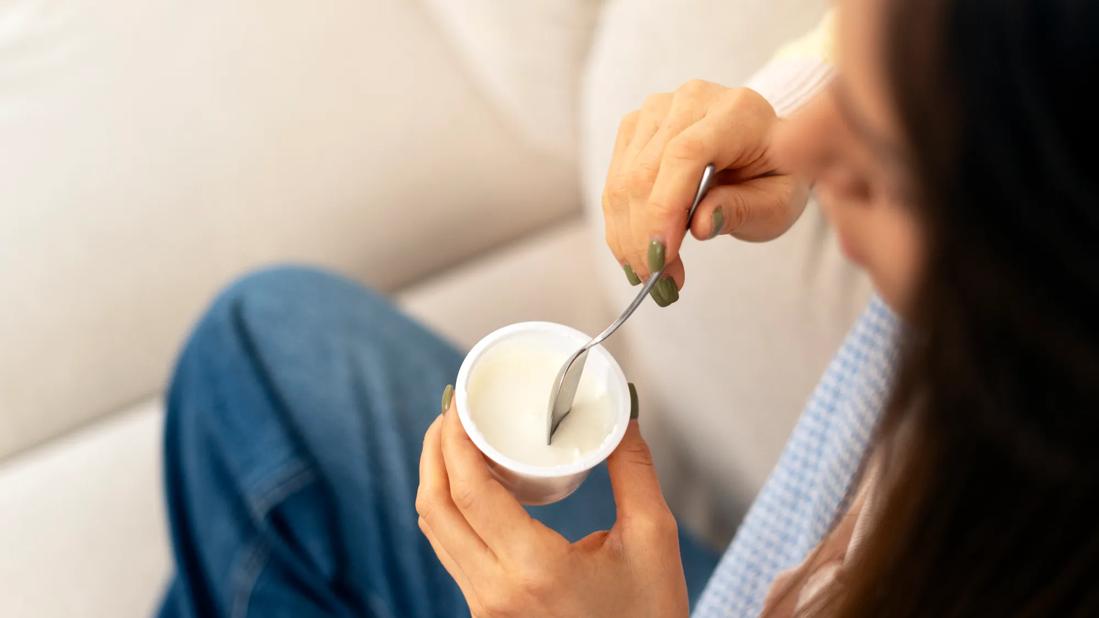Prescription and over-the-counter medications are the only safe and effective ways to treat a yeast infection

A quick internet search calls up a treasure trove of home remedies for yeast infections, from apple cider vinegar to essential oils. But are these treatments actually effective? And are they even safe?
Advertisement
Cleveland Clinic is a non-profit academic medical center. Advertising on our site helps support our mission. We do not endorse non-Cleveland Clinic products or services. Policy
The short answer is: No, on both counts.
Ob/Gyn Kathryn Goebel, MD, explains why DIY yeast infection treatments are more trouble than they’re worth, and what to do instead.
The best and safest way to treat a yeast infection is to see a healthcare provider or — if you know you have a yeast infection — use an over-the-counter medication.
Dr. Goebel says there are lots of problems with treating a yeast infection with home remedies. “The biggest issue is that self-diagnosis of yeast infections is not very accurate, especially if you haven’t had one before.”
Bacterial infections, allergic reactions and skin conditions can cause similar symptoms. So, it’s important to have a doctor confirm your diagnosis.
If you’ve had yeast infections before, and there’s no doubt that’s what you’re dealing with, Dr. Goebel says your best bet is medication:
Advertisement
Yeast infection home remedies are ineffective and unsafe. Stick with antifungal medications — they’re the only proven way to treat a yeast infection
So, back away from the baking soda bath and hand over the hydrogen peroxide. Your energy is better spent on prevention.
The best ways to prevent yeast infections are often the simplest, from keeping your vagina clean and dry and caring for your microbiome to avoiding scented menstrual products and home remedies.
Dr. Goebel shares her dos and don’ts for preventing yeast infections.
Yeast thrives in warm, dark and wet environments. Staying as clean and dry as possible can help prevent infections.
When it comes to cleaning your vulva (the skin surrounding the opening of the vagina), it’s best to keep it simple. Use warm water and soap that’s sensitive skin-friendly. Steer clear of harsh cleansers, douches, wipes and perfumes. The inside of your vagina does not need any soap or cleaning products. They can throw off your vaginal pH and disrupt the delicate bacterial ecosystem that keeps yeast levels in check.
Staying dry is as important as staying clean.
“Shower after exercise, avoid super tight clothing, don’t sit around in a wet bathing suit and don’t wear a pantiliner every day, as it can trap moisture,” Dr. Goebel stresses.
If your vulva is itchy or irritated, applying thick ointments like Vaseline® and Aquaphor® can provide a barrier against yeast and reduce discomfort.
Another tip? Don’t use scented or herb-infused menstrual products. They could cause itching, irritation and — yes — yeast infections.
Pre- and probiotics contain healthy bacteria, which research suggests can help keep yeast levels in balance. Dr. Goebel says they’re safe for most people to try, as they occur naturally in so many foods.
Look for lactobacillus, the bacteria found in healthy vaginal flora. You’ll find it in yogurt and kefir with live active cultures, or in tablet or pill form. If you want your prebiotics and probiotics in a single pill or supplement, look for products labeled “synbiotics.”
A few notes of caution:
Some people believe adding vinegar to your bath can reduce your vaginal pH, making yeast less likely to grow. But there’s little evidence that it works. More importantly, it can cause burning or irritation.
Advertisement
And definitely skip a more, ahem, direct application. “Old-fashioned vinegar douches disrupt natural healthy bacteria and increase the risk of infections,” Dr. Goebel states.
Baking soda baths are a popular home remedy for skin issues that cause itching and burning. But that doesn’t make them a good idea. You may get some temporary relief, but you risk drying out already-irritated skin. And if it gets inside your vagina, it could disrupt your vaginal flora, making the infection worse.
It used to be common to clean out wounds with hydrogen peroxide — after all, it has antiseptic properties. But doctors no longer recommend applying it to your skin, much less douching with it.
Hydrogen peroxide may kill some of the fungal overgrowth and bacteria. But it will also destroy the good bacteria, leaving you more prone to infections. Dr. Goebel says it can also be painful.
The internet might tell you that putting coconut oil or garlic into your vagina will help clear up an overgrowth of yeast. Ditto for essential oil and vitamin E suppositories. But there’s no solid evidence for any of these DIY treatments.
That’s not the only reason it’s a bad idea. As Dr. Goebel notes, there’s also a decent chance you’ll cause burning and irritation. “Home remedies not only don’t work, but they can also make your symptoms worse,” she warns.
Advertisement
Some unlucky women get recurrent yeast infections, meaning they get to deal with the symptoms four or more times a year. If that’s you, sitting in an apple cider vinegar bath might not sound so wacky. Anything to stop the discomfort, right?
Before you hit the grocery store in search of a DIY cure, Dr. Goebel urges you to see a provider. They can run tests to confirm you’re dealing with recurrent yeast infections — and figure out why.
“There are several health conditions and hormonal changes that can cause frequent yeast infections,” she explains. “Diagnosing and managing those conditions may be the best way to get you the relief you need.”
Advertisement
Learn more about our editorial process.
Advertisement

From baking soda to lemon juice, you probably have several home remedies in your fridge that can help with this fungal infection

Your face? Your armpits? Your butt? Yes, yeast infections can affect many parts of your body

The short answer from an obstetrician/gynecologist

This chronic condition most commonly causes pelvic pain and severe cramping during periods, but it can bring other types of pain symptoms, too

These over-the-counter kits are 99% effective at identifying when you’re most fertile each month

Start having sex about 72 hours before ovulation, then at least every other day during your fertile window

Strong vaginal and groin odor is normal for many people — it can be the result of sweat, urine infections and more

At-home treatments and lifestyle changes may help ease the symptoms and improve the appearance of varicose veins — but they aren’t a cure

The best parenting style balances enforcing rules and showing plenty of love

Tips include cutting back on sugar, focusing on exercise and managing stress

It can be harder to let go when you’ve invested time, energy and emotions — but it might be the healthier choice long term